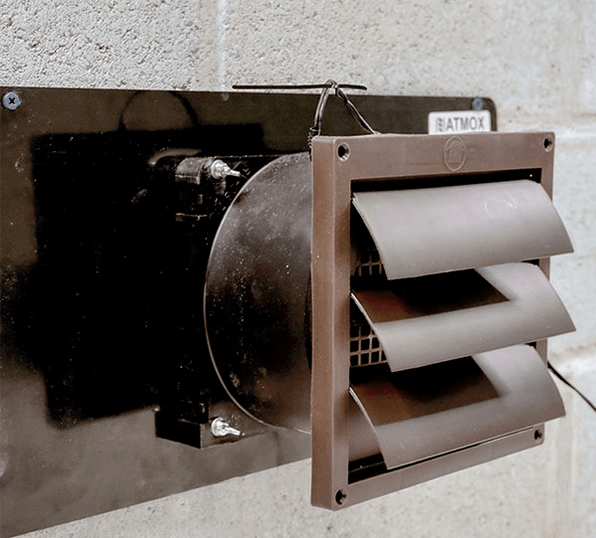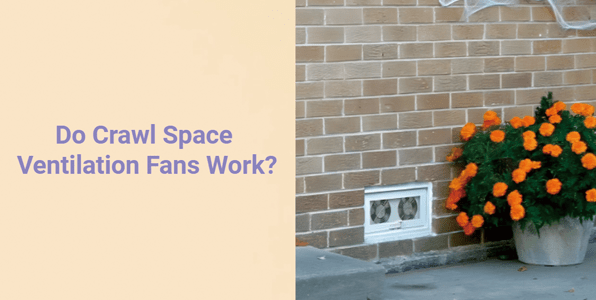Video: Do Crawl Space Ventilation Fans Work?

Figure 1: Crawl space vent fans.
Crawl spaces often hide beneath our homes, often overlooked but crucial for maintaining structural integrity and indoor air quality. These confined areas are susceptible to moisture buildup, which can lead to mold, mildew, and structural damage. Crawl space ventilation fans are proposed solutions to mitigate these issues. But do they truly work, and how effective are they in enhancing the health of your home?
1. Understanding Crawl Spaces
Crawl spaces are typically found beneath houses, providing access to plumbing, wiring, and sometimes acting as foundations. These areas often suffer from poor ventilation, leading to moisture accumulation due to evaporation, ground moisture, or external water ingress. Excessive moisture can result in a host of problems, including mold growth, wood rot, and an unhealthy indoor environment.
2. What are Crawl Space Ventilation Fans?
Crawl space ventilation fans are designed to improve airflow within these confined areas. These fans come in various types, including exhaust fans, which expel stale air, and intake fans, which bring in fresh air. Their primary goal is to regulate moisture levels by promoting air circulation and reducing humidity, subsequently averting potential damage caused by dampness and mold.

Figure 2: Crawl space ventilation fan.
3. Do They Work?
The effectiveness of crawl space ventilation fans is a topic of debate among experts. While these fans aim to address moisture issues, their efficiency depends on various factors:
Moisture Levels: If moisture accumulation is due to external factors like heavy rain or groundwater, ventilation fans may struggle to manage excessive moisture alone.
Climate and Location: Crawl space fans might be more effective in dryer climates compared to humid regions where moisture levels are consistently high.
Insulation and Sealing: Proper insulation and sealing of crawl spaces are vital. Without these measures, fans might circulate humid air from outside, exacerbating the problem.
Fan Placement and Sizing: Correct fan placement and sizing relative to the size of the crawl space are critical. Inadequate ventilation or improper positioning can hinder their effectiveness.

Figure 3: Crawl space ventilation fans placement.
4. Benefits of Crawl Space Ventilation Fans
When appropriately installed and in conducive conditions, crawl space ventilation fans offer several advantages:
Moisture Control: They aid in managing moisture levels, reducing the likelihood of mold and mildew growth.
Improved Air Quality: By enhancing airflow, they contribute to better indoor air quality in the crawl space by reducing the accumulation of stagnant, potentially contaminated air.
Preservation of Structural Integrity: Effective ventilation helps prevent wood rot and structural damage caused by excess moisture.
5. Installation and Considerations
Proper installation and consideration of various factors are crucial for maximizing the effectiveness of crawl space ventilation fans:
Professional Assessment: Consultation with a professional to assess your specific crawl space needs is essential. They can recommend the appropriate type, size, and placement of fans.
Moisture Barrier: Installing a moisture barrier, like a vapor barrier, in the crawl space can complement the efforts of ventilation fans by preventing moisture from seeping in.
Maintenance: Regular inspection and maintenance of the fans ensure they operate optimally and extend their lifespan.

Figure 4: Crawl space fan set installed near the ground.
6. Alternatives and Additional Solutions
While ventilation fans can be beneficial, they might not be the singular solution for all crawl space moisture issues. Additional measures might include:
Dehumidifiers: Using dehumidifiers in conjunction with ventilation fans can significantly reduce moisture levels, especially in highly humid areas.
Sealing and Insulation: Properly sealing and insulating crawl spaces prevent moisture intrusion and improve the overall effectiveness of ventilation systems.
Natural Ventilation: Utilizing passive ventilation techniques, such as vents and air pathways, can complement mechanical fans and aid in moisture control.

Figure 5: Dehumidifier for crawl space.
7. FAQs about Crawl Space Ventilation Fans
7.1 What Is the Best Way to Ventilate a Crawl Space?
The best way to ventilate a crawl space involves a combination of strategies:
1. Vents: Install vents to promote natural airflow. Ensure proper placement for effective cross-ventilation.
2. Moisture Barriers: Use vapor barriers to prevent ground moisture from entering the crawl space.
3. Crawl Space Fans: Employ exhaust or intake fans strategically to enhance airflow, reducing humidity.
4. Sealing and Insulation: Seal gaps and insulate walls to prevent outside air from carrying moisture into the crawl space.
5. Dehumidifiers: In humid climates, consider using dehumidifiers to maintain optimal moisture levels.
6. Professional Assessment: Consult with experts to tailor the ventilation system to your specific crawl space needs.

Figure 6:Shutter exhaust fan.
7.2 Will a Fan Help Dry out a Crawl Space?
Yes, a fan can help dry out a crawl space by improving ventilation. Proper airflow facilitated by fans helps reduce humidity and moisture buildup, preventing issues like mold and mildew. Intake fans bring in fresh air, while exhaust fans expel stale air.
However, it's crucial to address the root cause of moisture, such as leaks or poor drainage, and combine fan usage with measures like moisture barriers and dehumidifiers for comprehensive drying. Consulting professionals for a tailored solution based on the specific conditions of the crawl space is recommended.
7.3 What Size Crawl Space Vent Fan Do I Need?
Determining the size of a crawl space vent fan depends on factors like the crawl space dimensions and moisture levels. As a general guideline, aim for 1 cubic foot per minute (CFM) of airflow for every 50 square feet of crawl space area. For example, a 1,500 square foot crawl space might require a fan with around 30 CFM.
However, professional assessment is advisable for accurate sizing, considering local climate, insulation, and other specific factors influencing moisture. Always follow manufacturer recommendations and consult with experts for the most suitable fan size for your crawl space.
8. Conclusion
Crawl space ventilation fans can be effective in managing moisture and improving air circulation within confined spaces. However, their efficiency depends on various factors, including climate, installation, and maintenance.
While they offer benefits in mitigating moisture-related issues, considering additional measures such as sealing, insulation, or using dehumidifiers might be necessary for comprehensive moisture control and ensuring a healthy indoor environment. Consulting professionals for tailored solutions remains crucial for optimizing the efficacy of crawl space ventilation systems.



